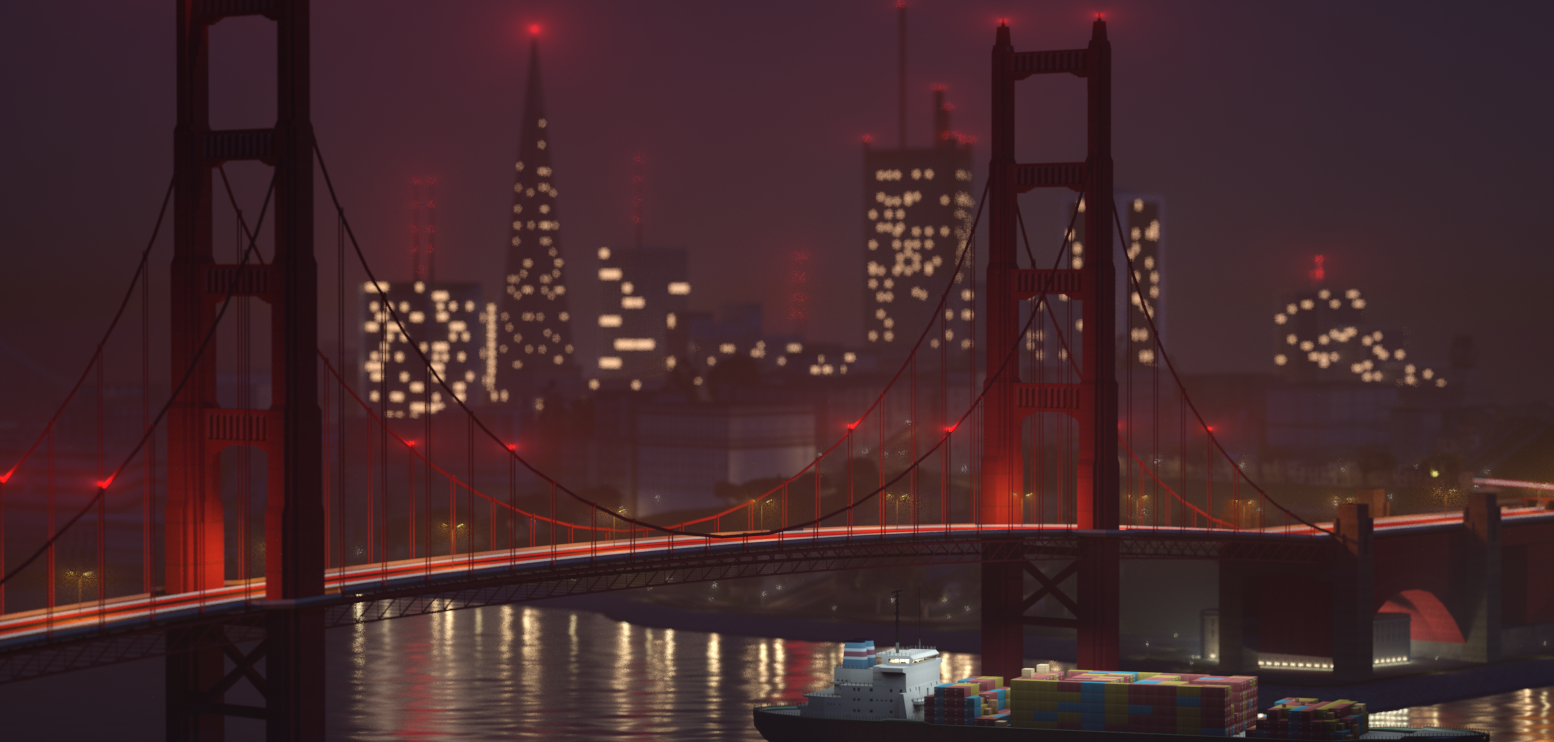-
Posts
3,538 -
Joined
-
Last visited
-
Days Won
118
Everything posted by Tut
-
That's correct. I use CFG Studio by the same author as the initial article I sent, it's incredibly useful to generate decimal values (or however they're called) by simply clicking the checkboxes which then adds to the value, from there you can copy it and add "0x" behind it, for instance "0x00002000" is the flag for DBL_EXHAUST only. You can opt to enable more flags for modelFlags if you so desire. You open the file "handling" in GTA SA directory\data\ and can reference what default GTA vehicles use for their modelFlags etcetera. It helped me a bunch. http://projectcerbera.com/tools/cfgstudio2/
-
You'll have to edit its vehice handling, specifically what you're looking for is DBL_EXHAUST on modelFlags, you can find more here. http://projectcerbera.com/gta/sa/tutorials/handling
-
Nothing that I can think of. Don't change its name, keep it as is ( leaf ). On your server window type start leaf or alternatively in-game use F8 (console) and type start leaf. This will start the resource. Provided you're following my advise I can't see why it shouldn't work for you. I followed it to be sure and it worked just fine on my end. Shrug.
-
That's the correct path. Resource file version is 1.5 but I don't even think that matters unless you're running an old version of MTA. I made the resource from my workstation and then tested on my MTA computer, it worked just fine. Could you please try typing refresh leaf and then start leaf. It won't start automatically by just adding it to resources\.
-
Please stick to one question at a time. I made you 2 mods and a resource to load it in, as per your request "I need this one tree leaves removed". Please let me know if it works on your end. But yes, on my first reply to your thread I linked another thread where I gave the OP a link to a mod which purges all tree leaves.
-
You did not install the resource correctly (simply drag and drop the "leaf" folder into resources\.) I went on my MTA computer and tested, works fine. However it does purge the leaves from a lot of other trees, because the TXD is shared accross multiple different types of trees. I'll have a DFF model modified for you instead, that way it'll only remove leaves from that particular model. https://cdn.discordapp.com/attachments/308956559201796097/676121440172376073/leaf.rar Due to the way that MTA works with models, you may have to either remove the trees through map editor and then place them again, otherwise they will not replace correctly. There's a possible solution here: https://wiki.multitheftauto.com/wiki/EngineReplaceModel : Note: Default GTA map objects behave inconsistently when using this function on them. If you want to replace models in the original GTA map, use one of the methods shown here. https://wiki.multitheftauto.com/wiki/EngineReplaceModel_notes
-
Did you start the resource? Please try go to Map Editor afterwards and spawn object ID 700. See if it works.
-
You should have a folder in there called "Resources". Put the folder in there and then refresh your server or "refresh leaf".
-
I'm not into coding so I wouldn't really know, I'm afraid. I suggest you ask your question on the Scripting board: https://forum.multitheftauto.com/forum/71-scripting/ Alternatively you may connect to MTA discord where we have an active scripting community available to help out. As a note can you please use the Edit button to avoid doubleposting, also there's no need to bump your thread if it isn't being massively flooded out by other threads. There's not much traffic here so there's no need to bump it. Thanks.
-
I assume you've already found the ones on the community resource site and shader examples site. With that in mind, there's really no other solution but: - Creating it yourself - Acquiring it from somebody who has access to it - Hiring developer(s) to create it for you As unfortunate as it is, those are the only recommendations I can give.
-
I have made some threads on modeling and documented a good bunch on SA modding. If none of this helped you, please join MTA discord (click discord image on bottom of MTA forums) and ask your inquery in #modelling. I can recommend 3ds Max as application over Blender if you value your chances of receiving support, as the Max community in SA modding is far greater than Blender or any other application. This is not to say you shouldn't use Blender, it surely is a great application with its potentials in the 3D field. If you prefer modeling with this application, by all means go for it. Blender plugin (updated): https://gtaforums.com/topic/925364-dragonff-blender-gta-io/#comments
-
No worries. I have made a resource for you which loads the texture mod into your server. Simply drag the leaf folder into your resources directory for your server. It's a simple TXD replacement script which you need make no changes to. https://cdn.discordapp.com/attachments/308956559201796097/675479278963654670/leaf.rar For future reference please see the engine functions for replacing such files: https://wiki.multitheftauto.com/wiki/EngineReplaceModel https://wiki.multitheftauto.com/wiki/EngineLoadTXD
-
It looks to be this ID: https://dev.prineside.com/en/gtasa_samp_model_id/model/700-sm_veg_tree6/ If you're unable to use the shader resource that I linked in the other thread, please see if this'll work: https://cdn.discordapp.com/attachments/308956559201796097/675458841466634240/dad13d46b2800615.txd (that's a .txd replacement for model ID 700)
-
Hi Jordan, I have replied to a user asking a similar question, please see: https://forum.multitheftauto.com/topic/122241-mta-leafless-trees/?do=findComment&comment=972041 I believe you'll be able to adjust the code to only cull leaves from that particular tree. Have a look at my last reply for a method on getting the tree ID and its texture names. This should be all you'll need, if not please let me know and I'll make you a mod instead.
-
I'm not sure. I'd assume the MTA resource linked above would cull all leaves on trees rather than just one type of tree, that's very odd. Last resort is going in map editor, selecting unaffected trees and copying their object ID, then looking up the ID on https://dev.prineside.com/gtasa_samp_model_id/ and inspecting the object's texture dictionary through the object page. Add the leaf texture name to the MTA resource code. Please bear with me as I don't do programming. I believe there's a way that you can have the code delete anything that has "leaf" in its name. Something like #leaf or *leaf, I'm not sure what the syntax is but have seen it on other shaders before. I'm sorry if this made no difference. This is about all I can help with.
-
I believe you're the one who asked on our discord channel #modelling ? I gave an answer to that message earlier the morning. Please, if it wasn't you, connect to the MTA discord server and read my response. Besides you're replying to an old thread. Please create a new if you intend to have a continous discussion and add as much information to the thread as possible, that way we won't be left with a handful questions on what exactly you're trying to do. Please navigate to the following board and ensure you've read the posting guidelines for that board in particular. https://forum.multitheftauto.com/forum/177-modelling/
-
I believe you're looking for an alpha mask, but it's a little unclear what exactly is wanted. Have a look at these nonetheless. https://forum.multitheftauto.com/topic/60602-rel-50p-masking-textures-shader/ https://wiki.multitheftauto.com/wiki/Shader_examples (at the bottom, mask hud) I can only give these references since scripting is not my field. I hope it leads to help though.
-
Nice ones, brings me back to when I was getting into modding by retexturing models. The asian gang member and second last one are my favorites. Please, can you upload through a direct download site (e.g upload.ee, mediafire, mega) and not having users to go through a monetized site (like adfly) first. The link in OP will be removed within 48 hours. Thanks, @cau123
-
It's possible that your snow mod uses tree leave textures that are named in a way that the MTA resource cannot recognise as leaves. If your snow mod is done through shaders then I think it might overrite the MTA resource "remove leaves" shader. I'm not knowledable on shaders so I cannot give much advise there.
-
Thanks for your reply. Did it work for at least a selection of trees (e.g ones shown on the mod's showroom) or do every tree appear with leaves? Good news either way though, I found there's a MTA resource which removes leaves too. To install it simply create a new resource folder in your server's resources area, call it removeleaves and drag and drop all of the downloaded file's contents into said folder. https://community.multitheftauto.com/index.php?p=resources&s=details&id=15863
-
Hello and welcome to the community @Jedaje. Searching your inquery "GTA trees without leaves mod" brought me a few results, namely https://www.gtainside.com/en/sanandreas/mods/55377-trees-without-leaves/. I hope it helps. For future reference please stick to one thread per issue, so to prevent creating duplicats around the forum with same replies. As a general note, try and post sparingly. If you wish to add additional content to an existing post, please use the Edit function.
-
Hello and welcome to the forums @Meron! We have a selection of rules (click for redirect) that we like to enforce, so that everyone can use the forums with ease and have a good time in doing so. As this is an English speaking forum I'd like to ask that you translate your post into English. We have boards for other languages as well, should you be interested: https://forum.multitheftauto.com/forum/94-other-languages/
-
@hilingOP as this is more of a scripting question I'd strongly recommend you ask in this board instead: https://forum.multitheftauto.com/forum/71-scripting/ Please make sure to read the pinned thread for guidelines and rules on posting.
-
Hello and welcome to the forums @ThomasMiichael. Please make sure to read the forum rules on what can be posted and which section your post may belong to. If you're looking to hire staff/developers to your server/service please use this section (in English messages): https://forum.multitheftauto.com/forum/149-looking-for-staff/ It's possible that there's a Portuguese section for it as well, I'm not sure. If there's not then don't post it there: https://forum.multitheftauto.com/forum/97-portuguese-português/ Thanks for understanding, I wish you a nice stay
-
Okay, thank you very much for clarifying. I'm glad you resolved the issue.




